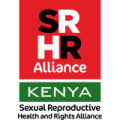INFORMATION
The goal of the SRHR Alliance is to deliver SRHR information directly to young people, by making sure content is made available; meaning that the information is accessible to young people and is delivered to young people through strategic dissemination such as social media. We strongly believe information should increase young people’s comprehensive and correct knowledge on SRHR and HIV, as well as increase their capacity to assess services or seek their own information. We do this by increasing access and quality of SRHR education/CSE, through the provision of in- and out-of-school SRHR education. These programmes empower young people to make healthy and well-informed decisions and in turn the demand for services by young people will grow, and as such the demand for youth friendly SRH services will increase.
SERVICES
Increasing access and quality of SRH Services is key for the alliance and through select partner organizations we create demand for and ensures access to quality SRH services including commodities by young people and women of reproductive age. Our programmes strengthen the provision of quality public and private SRH services (accessible, acceptable and affordable for young people) to meet the increased demand. By strengthening the provision of services the supply increases. These services include youth-friendly sexual and reproductive health services that deliver a comprehensive range of SRH services in ways that are responsive to the specific needs, vulnerabilities and desires of young people. Some of the services provided by partners either directly or in collaboration with government include HIV testing, counselling and treatment( HTC), STI testing and counseling, family planning services, Maternal health services, comprehensive abortion care services, counselling services and Referral services. Partners in the alliance providing SRH services include FHOK, KMET, CHAI, WOFAK, GLUK, Child-Line Kenya AMREF Health Africa, SAIPEH, ADS Nyanza and CSA.
ENABLING ENVIRONMENT
After decades of efforts to improve adolescent sexual and reproductive health (SRH), it has become increasingly clear that strengthening health services alone is not enough. Building enabling environments so that adolescents realize their SRH and human rights requires interventions that work at multiple levels with adolescents, with families, with communities, and at the societal level. A range of social, cultural, political, and economic factors increase adolescents’ vulnerability to sexual and reproductive health problems. Addressing these underlying determinants is essential for adolescents to realize their fundamental human rights and protect their health. Building enabling environments for young people includes working with various stakeholders, such as parents, community members, and policy makers. A true enabling environment reflects a set of interrelated conditions that affect the ability of young people to access relevant and necessary health services, information, and products.
Interventions span four categories: empowering individuals (e.g., educating girls, building their assets, and creating safe spaces), building healthy relationships (e.g., enhancing parental communication and peer networks), and engaging communities (e.g., working with men and boys to change harmful gender norms), and transforming societies (e.g., promoting laws and policies that protect human rights).
MEANINGFUL YOUTH PARTICIPATION
The SRHR Alliance aspires to have young people at the center and as leaders of our work. The participation of young people is meaningful when they are structurally engaged in all layers of decision-making and in the research, design, planning, implementation and evaluation of our programmes. The SRHR Alliance aims for the high involvement of young people and strive towards models where all alliance partner organizations work with young people as equal partners.
Young people with a particular focus on the marginalized and under-served young people, are at the center of the GUSO program’s Theory of Change. The SRHR Alliance’s aim for MYP is not only to ensure effectiveness of youth focused policies and programmes, but also to empower young people to become leaders; by developing confidence in themselves and their abilities.
BUILDING AND SUSTAINING THE ALLIANCE

